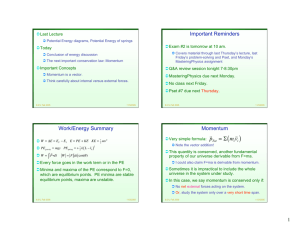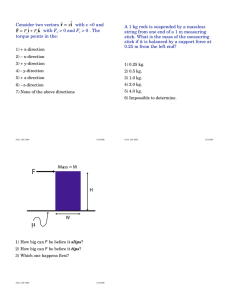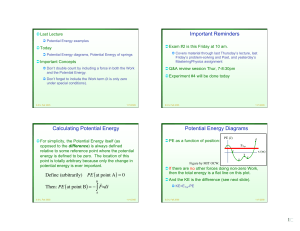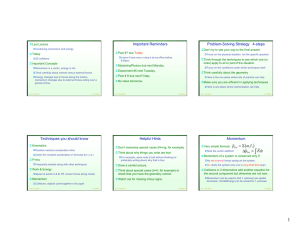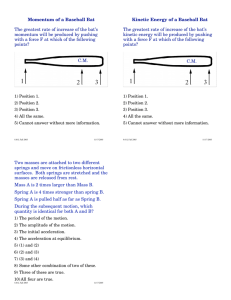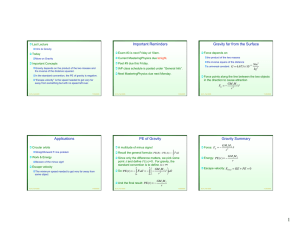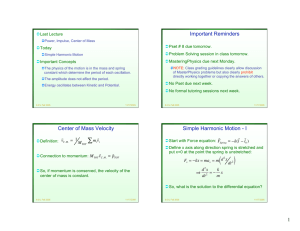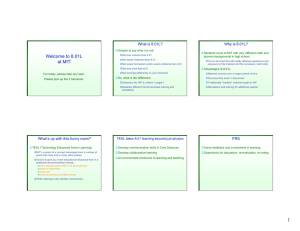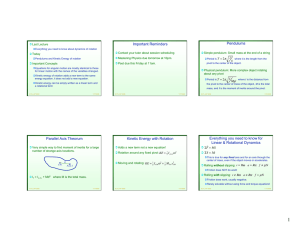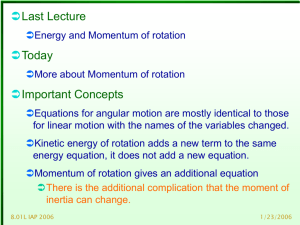i Important Rem nders
advertisement
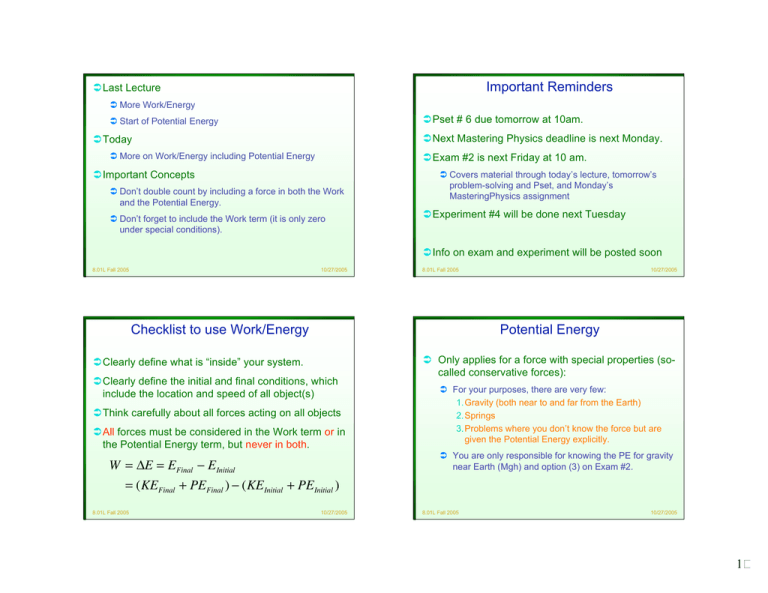
Important Reminders Last Lecture More Work/Energy Pset # 6 due tomorrow at 10am. Start of Potential Energy Next Mastering Physics deadline is next Monday. Today More on Work/Energy including Potential Energy Exam #2 is next Friday at 10 am. Important Concepts Don’t double count by including a force in both the Work and the Potential Energy. Don’t forget to include the Work term (it is only zero under special conditions). Covers material through today’s lecture, tomorrow’s problem-solving and Pset, and Monday’s MasteringPhysics assignment Experiment #4 will be done next Tuesday Info on exam and experiment will be posted soon 8.01L Fall 2005 10/27/2005 8.01L Fall 2005 Checklist to use Work/Energy Potential Energy Clearly define what is “inside” your system. Clearly define the initial and final conditions, which include the location and speed of all object(s) Think carefully about all forces acting on all objects All forces must be considered in the Work term or in the Potential Energy term, but never in both. W = !E = EFinal " EInitial = (KEFinal + PEFinal ) " (KEInitial + PEInitial ) 8.01L Fall 2005 10/27/2005 10/27/2005 Only applies for a force with special properties (socalled conservative forces): For your purposes, there are very few: 1. Gravity (both near to and far from the Earth) 2. Springs 3. Problems where you don’t know the force but are given the Potential Energy explicitly. You are only responsible for knowing the PE for gravity near Earth (Mgh) and option (3) on Exam #2. 8.01L Fall 2005 10/27/2005 1� Calculating Potential Energy Using Potential Energy to Calculate Force ! ! PE ( B) = ! " Fids B For simplicity, the Potential Energy itself (as opposed to the difference) is always defined relative to some reference point where the potential energy is defined to be zero. The location of this point is totally arbitrary because only the change in potential energy is ever important. If: A Then: Fx = ! d(PE) d(PE) Fy = ! ... dx dy Define (arbitrarily) PE ( at point A ) = 0 ! ! Then: PE ( at point B) = ! " Fids B Given F, you can find PE and vice versa. A 8.01L Fall 2005 10/27/2005 8.01L Fall 2005 Potential Energy Diagrams PE as a function of position: PE (J) Potential Energy Diagrams PE (J) d KE < 0 Unphysical!! ETot e b Figure by MIT OCW. a 10/27/2005 KE = 0 Object stops x (m) ETot c Small KE Large KE x (m) If there are no other forces doing non-zero Work, then the total energy is a flat line on this plot. And the KE is the difference (see next slide). KE=ETot-PE Places where Fx = 0 8.01L Fall 2005 10/27/2005 8.01L Fall 2005 Figure by MIT OCW. 10/27/2005 2�
